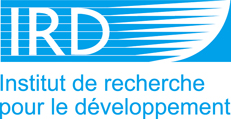Isabelle Jeanne
Isabelle Jeanne is a medical doctor who has worked for Pasteur Merieux serums & vaccines on clinical research on vaccines against pertussis, flu, and chicken pox. She received a master’s degree of parasitology and epidemiology. Since 1996 she was part of the Réseau International des Instituts Pasteur and worked and lived two years in French Guyana, five years in Madagascar and six years in Niger.
Very early, the epidemiological studies on spatial heterogeneity of malaria have required the integration of environmental data and she used radar remote sensing data to find potential breeding sites of malaria vectors in the Amazonian forest. In Madagascar, she also worked on malaria and on cholera, schistosomiasis and plague with integration of environmental data within a GIS and spatial analyses to determine risk areas and risk periods of the diseases, providing tools to control programs. In Niger, Isabelle JEANNE worked as a technical assistant for the French foreign Affairs ministry and was the head of the Unit "Health and Climate" of the CERMES, an institute of research of the Ministry of Health of Niger. She conceived implemented and monitored programs with colleagues to study the impact of climate variability on malaria transmission, to define more precise bioclimatic areas of malaria in the Sahel. Forty four sentinel sites were implemented all over the country and became operational, with weekly reports of epidemiological data and daily hydrometerological parameters sent by the ARGOS system satellite transmission. Remote sensing images were acquired to complete this important applied research program. Seasonality of bacterial meningitis is very characteristic in Sahel, the links between the aerosols events and the meningitis cases dynamics were studied at different spatial scales.
In parallel, Isabelle JEANNE was part of a West African network and contributed to build international projects with European, American and West African collaborators. She also trained young researchers. She has a PhD in Science of geographical information from the University of Paris Est and is now an international consultant as a health specialist on the interface between high technology research fields (like French, European or American spatial agencies) and their application to Public Health in tropical countries. She currently lives in France to write papers, and to continue studies with collaborators.
Climate Change - the reality of the climatic impacts on health - Malaria and Meningits in Niger
Now that both climate and health communities' attention is increasingly focused on climate change, it became essential to collect and analyze reliable data to understand climate-health interactions better, especially the role that climate plays in driving diseases burdens and health outcomes, for now, and the future.
Through several projects, a program was conducted in Niger to study the impacts of climate on malaria and meningitis in the Sahel where the climate variability is very important, the population is very vulnerable, thus where the climatic impact is more important and where the applications are more useful. New tools were used, new methods were applied.
As part of a large distribution of long lasting impregnated bednets, in order to follow the morbidity of malaria, before and after the operation, forty four sentinel sites were implemented all over the country and became operational. Weekly reports of epidemiological data and daily hydrometerorological parameters were sent by the ARGOS system satellite transmission. Entomological and parasitological studies were implanted in these sites to determine the transmission patterns. To be able to know whether the prevalence was changed thanks to the control program, it was necessary to know what the climate drivers were in each type of bioclimatic area. Remote sensing images were acquired to complete this important applied research program.
Seasonality of bacterial meningitis is very characteristic in Sahel. The analysis in space and time of the coincidences of dust events and the dynamic of meningitis cases during ten years (1995 to 2005), thanks to an index from METEOSAT, showed a delay between the peaks of dust and the increases of meningitis cases, during both epidemic and non epidemic years.
In Niger, epidemic meningococcal meningitis is primarily caused by Neisseria meningitidis serogroup A. An unprecedented incidence of serogroup X meningitis was observed in 2006. The analysis of the seasonal dynamics of this epidemic was made unique thanks to a very well documented database, built after both atmospheric measurements and microbiological confirmations of the clinical cases.
Our results underline the importance of reliable data originally from multiple scientific fields and reinforce the need for interfaces in order to join the efforts of the different teams.
If you wish to contact Isabelle Jeanne, please click here




